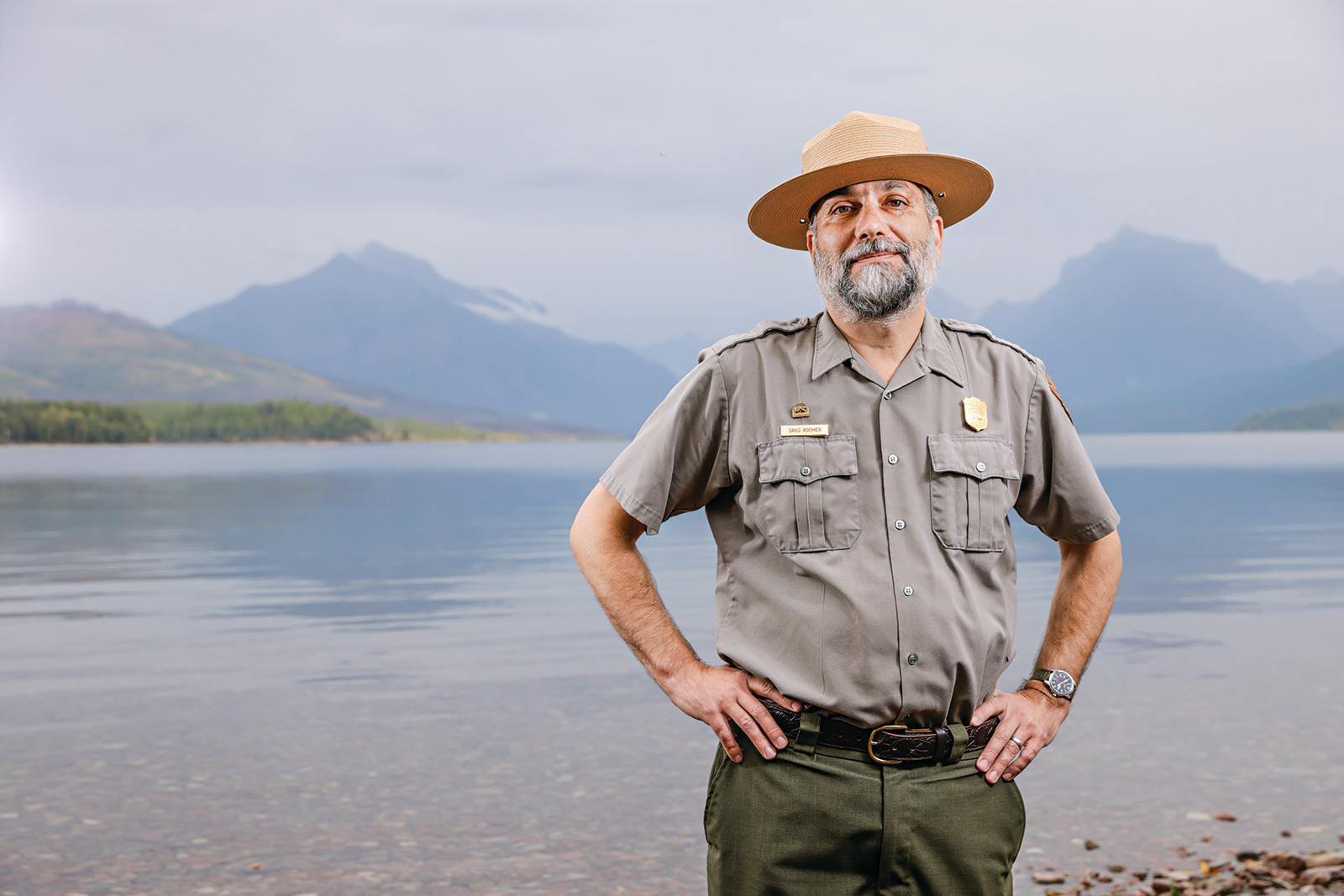
Meet the Super
Dave Roemer began his new position as Glacier National Park’s 23rd superintendent in July, pledging to co-steward the park’s resources alongside its Blackfeet tribal partners and to improve the visitor experience while promoting sustainability
In May of 2022, a few months before Dave Roemer was sworn in as Glacier National Park’s 23rd superintendent, a cohort of three captive-raised California condors winged above the towering old-growth treetops of Redwood National Park, signaling the first time in more than a century the bird had occupied the ancestral territory of the Yurok Tribe.
In addition to holding tremendous spiritual power among Yurok traditionalists, who rely upon condor feathers and other organic ornaments to perform ceremonial dances, the critically endangered bird shares other attributes with its Indigenous cohabitants, including a near brush with extinction and, today, a revival on their ancestral domain.
In that sense, the reintroduction of the condor marks not only a milestone achievement in a complex conservation effort spanning decades, but it represents a defining moment in how Indigenous cultural values should be acknowledged and incorporated on a landscape from which they were systematically annihilated. It also helps usher in a new era of co-stewardship between land management agencies and tribal governments, as well as a realignment of ecological and cultural values after generations of imbalance.
For Roemer, whose former job as deputy superintendent at Redwood National and State Parks afforded him the opportunity to improve relationships with Yurok tribal leaders while gaining a more fluent understanding of the condor’s cultural significance, the bird’s reintroduction crystallized his belief that national parks can serve as a model for the renewal and preservation of cultural heritage.
“What’s remarkable about the work to restore the California condor, or prey-go-neesh, to Yurok Ancestral Territory and Redwood National and State Parks is that it actually began with the cultural values,” Roemer said in a recent interview from the south shore of Lake McDonald. “That’s why it was so fascinating and that’s why it’s representative of a model of co-stewardship with our tribal partners. They are the driving force behind this initiative.”
The model that so impressed Roemer during his tenure at Redwood National Park shares an analog in Glacier, where the park is participating in a program launched in 2009 by the Blackfoot Confederacy to reintroduce bison on their ancestral homeland.
In the case of the Yurok, who lived for centuries along California’s Klamath River, it started in 2010 when the tribe received 217 sacred items from the Smithsonian Institution in what was then the largest repatriation of Native American ceremonial artifacts in U.S. history. Among the items were woven baskets, obsidian blades, wolf headdresses, and California condor feathers, which are traditionally used as ceremonial ornaments in dances that can last 10 days.
“For the tribe, having those feathers back meant they had to be used, they had to be lived,” Roemer said. “That was really the catalyst for this latest chapter in the condor’s recovery. The tribe decided that now was the time to reintegrate this dance into their culture and, in doing so, they identified condors as their keystone — they were going to build the conservation program around bringing back an aspect of their world that had been lost, that had been taken from them. So, it’s a case of the cultural importance leading the path for them to coordinate the ecological pieces, which is what drew the federal government to the table. We kind of brought the logistical nuts and bolts of a recovery plan. But the tribe was the driving force and the leaders of the program.”
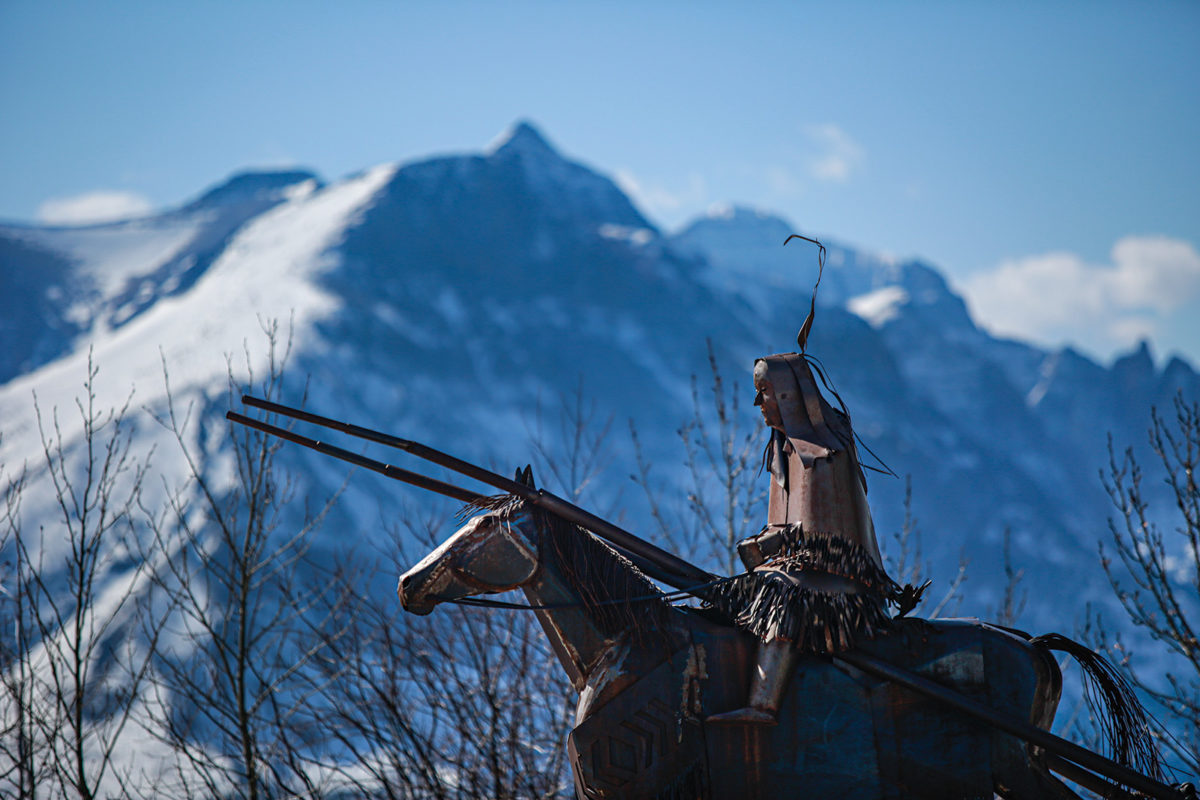
At Glacier, a similar set of cultural and ecological parallels conjoin the park and its Blackfeet Nation neighbors, the original gatekeepers along the park’s eastern boundary.
Because long before it was the 1-million-acre “crown jewel” of the National Park Service, Glacier and its jagged expanse of peaks that form the Rocky Mountain Front was known as “Miistakis,” or the “backbone of the world” to the Blackfeet, as well as the source of the tribe’s creation story. And while much remains unchanged since the landscape was shaped several millennia ago, the absence of millions of bison roaming the Great Plains is a notable departure.
Indeed, for thousands of years bison were an integral species to the Blackfeet, but more than a century ago they were removed from the landscape by white settlers. Now, the Blackfeet Nation is leading an international effort to return the iconic animals to the Rocky Mountain Front. Known as the Iinnii Initiative and launched in 2009, the leaders of the four tribes that make up the Blackfoot Confederacy — the Blackfeet Nation, the Kainai Nation, the Piikani Nation and the Siksika Nation — have been working together to conserve traditional lands, protect Blackfeet culture and ensure bison have a home. With the support of Glacier National Park, the initiative has continued to evolve, gaining additional support from the park’s previous superintendent, Jeff Mow, and renewed backing from Interior Secretary Deb Haaland, the first Native American to lead a Cabinet agency, and National Park Service Director Chuck Sams, the first Native American to lead that agency.
“The park, through history, has not always been a very good steward of Indian culture,” John Murray, the Blackfeet Tribal Historic Preservation Officer, said. “There have been many disputes. However, the tribe has deepened its relationships with the park, and thanks in part to the last few superintendents it has played a larger role in co-management of the park.”
Just a few months after arriving in Glacier National Park, Roemer says he’s grateful for the work that his predecessors have done to ensure the park’s doorstep to Blackfeet ancestral lands includes a welcome mat upon which tribal partners may exchange ideas and advance initiatives with park officials. But Roemer also views the appointment of Indigenous administrators as a sign that the times are, finally, changing.
And while it may have taken more than 100 years for the tribes to get so much as a foot in the door, as the 21st century marches on, Roemer says it’s time to kick it wide open.
“It’s truly an exciting time for parks and our tribal co-stewards,” Roemer said, adding that he recognizes that the Blackfeet Nation is not “monolithic,” and that not all members share the same core tenets. “I think that having a Native director of the park service, a Native secretary of the interior and with the general evolution of ideas, as well as the passage of so much time plus the hard efforts of people like Jeff Mow and others that have built some really strong relationships, I think Glacier is poised to really reap a lot of benefits and also pay some of that forward to its tribal co-stewards.”
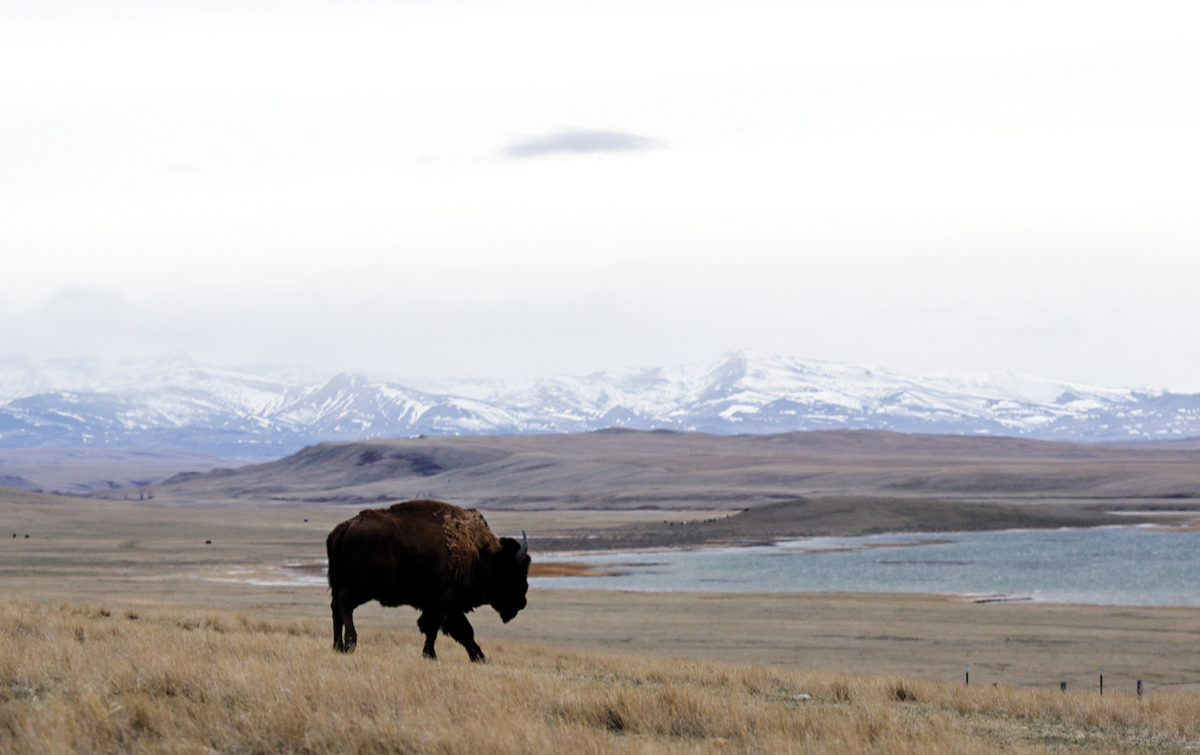
In particular, the Iinnii Initiative offers an opportunity for the Blackfeet to reintegrate a cultural centerpiece and ecological keystone, and for the park to atone for one of colonialism’s most destructive legacies — the extermination of bison from North America.
“I can’t think of a more compelling interest,” Roemer said. “Obviously, what was done to the Blackfeet and other tribes through the removal of bison was unconscionable. They were starved out. And so bringing bison back has very important parallels and the park is committed to being part of that revitalization. This is why I signed up for a park service job. I figured that working with animals and natural resources would be part of it, but it’s the human dimension and the dimension of restoration and justice that makes projects like this so interesting. Even calling it a ‘project’ seems like a belittling term. The bureaucrat in me thinks in terms of projects and budgets and timelines and things like that because that is how government works. But this is so much more than that.”
Although Roemer arrived in Glacier in July when the busy summer season was well underway and spent much of the past few months getting acquainted with the vehicle reservation pilot study now in its second year, as well as meeting with other stakeholders who live along the boundaries of the park, and whose concerns raise from ticketed entry to road construction, he says he says some of the most memorable moments from his first summer on the job occurred during a two-day trip to the Blackfeet Indian Reservation in September.
“Having that time to really slow down and meet the Blackfeet Tribal Business Council members and the constellation of groups that are energized around the Iinnii initiative and range management and issues surrounding tribal sovereignty, it was so great,” he said.
According to Lauren Monroe, Jr., vice-chair of the Blackfeet Business Tribal Council, the new superintendent’s efforts have not gone unnoticed.
“He just came up last week and I have to say, I have the full confidence that he takes the spirit of cooperation between the tribe and the park very seriously,” Monroe said. “Honestly, these last two superintendents have helped facilitate a very productive and fruitful relationship with the Blackfeet. They have honored tribal sovereignty and we have not been pressured into making decisions that were not by us, for us.”
In particular, the leadership of Jeff Mow, who retired at the end of last year after leading the park for eight years, was instrumental in deepening Glacier’s relationship with the Blackfeet Nation — a relationship whose strength was tested in March 2020, when tribal leaders declared a state of emergency due to the COVID-19 pandemic, voting to block access to Glacier’s eastern entrances that draw millions of visitors each summer. The potential for tourism to exacerbate the public-health crisis was the main driver for the decision, and the tribe found a sympathetic leader in Mow, who endorsed the decision at every turn.
Propping up that developing relationship even further have been the initiatives of the current administration, says Monroe, who was selected to serve on Secretary Haaland’s advisory group to help identify and recommend changes to derogatory terms assigned to landmarks and place names.
“We were the original caretakers of this land for millennia, and we have a rich history and a relationship with this landscape,” Monroe said. “To have our voices recognized feels really good, because we have a lot to contribute and bring to the table.”
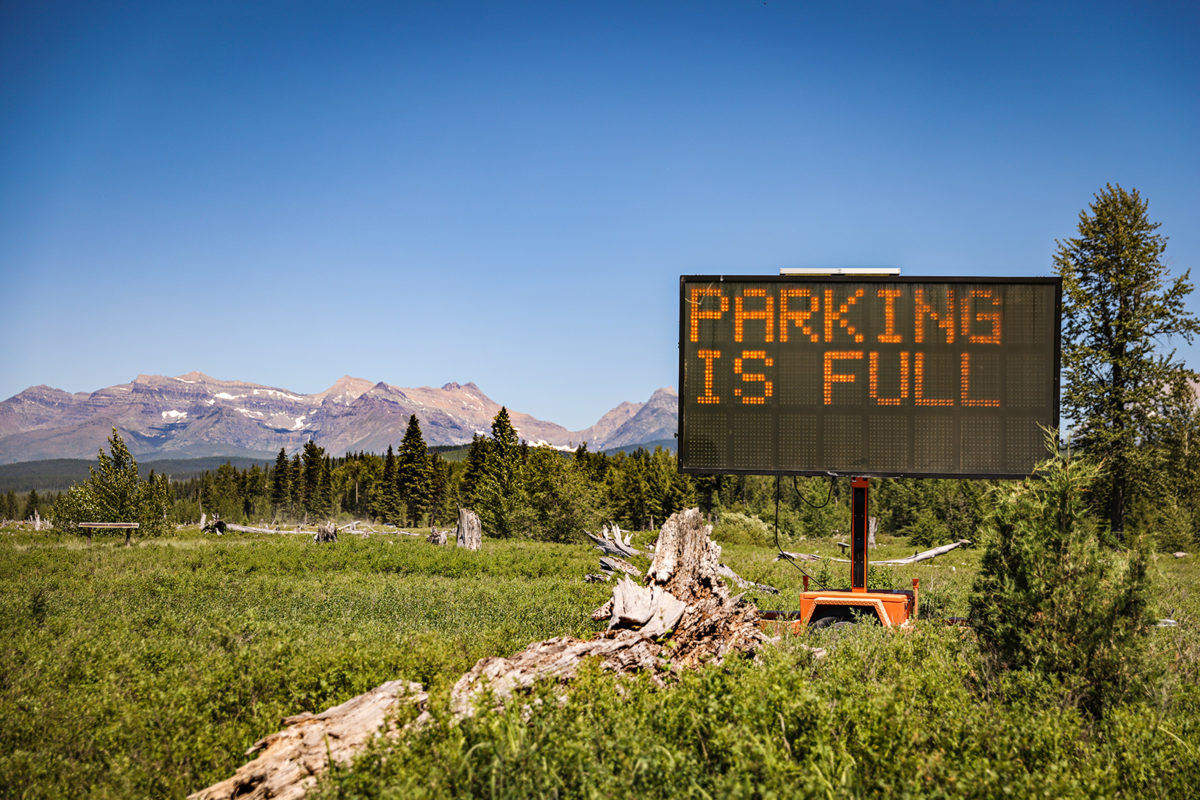
Roemer also recognizes that it’s a big table with a lot of competing interests, and he’s spent an equal amount of time learning about how the trend of increasing visitation to Glacier National Park has damaged park resources and compromised the visitor experience, both to the out-of-state contingent as well as for locals.
Although new to Glacier, Roemer has some familiarity with the park, which he describes as the continuation of a circular path that began as a graduate student at the University of Montana, as well as his time spent working in the Kootenai National Forest, surveying bats, northern bog lemmings, and harlequin ducks.
Still, the region is more crowded now, and to help mitigate the congestion that has resulted from spiking visitation trends, the park has implemented a vehicle-reservation pilot program requiring that motorists who want to drive through the heart of Glacier National Park during the high summer season obtain a reservation to do so. The park recently concluded its second year of the requirement along the famed Going-to-the-Sun Road, which it expanded this summer to include the North Fork Flathead River area accessed via the Polebridge Ranger Station, which isn’t connected to the famed alpine byway over Logan Pass.
In 2021, Polebridge was one of the few exceptions to the reservation requirement, and became a contingency destination for the deluge of visitors who did not procure a ticket to access the Sun Road. As a result, district rangers were forced to turn away visitors on a daily basis, blocking incoming traffic by mid-morning. That experience has prompted park officials to liken the overcrowding problem to a big balloon — pinch it in one area and it bulges out in another.
As testament to that theory, the North Fork area received a more sustainable degree of pressure this past summer while the reservation requirement was in place; however, since the requirement was lifted after Labor Day, rangers have had to swing the gates to incoming visitors at Bowman Lake nearly every day. Moreover, park entrances that were exempt from the reservation requirement in 2022, such as Two Medicine, experienced more crowding than in previous years.
Sarah Lundstrum of the National Parks Conservation Association (NPCA) said she was encouraged by Roemer’s apparent appetite for a plan or proposal aimed at enhancing the visitor experience with a strong focus on resource protection. That’s one reason the NPCA is conducting visitor intercept surveys at other parks across the West — to gain a better sense of what’s working and what’s not.
Although some observers have attributed a downturn in visitation to Glacier in 2022 to the vehicle-reservation requirement, Lundstrum said the figures were down “across the board,” due in large part to the record heat and the exorbitant cost of gasoline. Locally, a cold and wet June, coupled with the unprecedented rainfall that caused flooding, rockslides, and mudslides within Yellowstone National Park, left the visiting public with the impression that parks were not in season.
“This was also the first full year post-Covid that international travel resumed, so it was really due to a combination of factors that parks didn’t receive as much visitation pressure as they did in 2021,” she said.
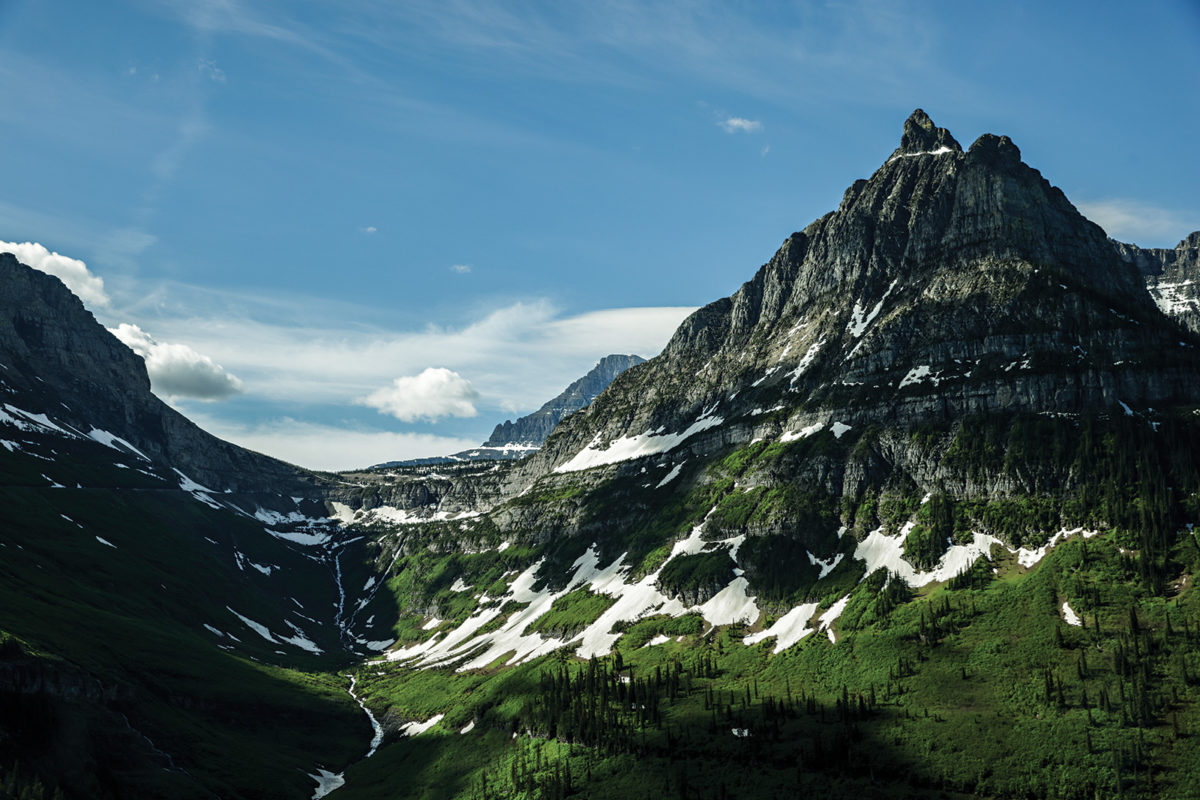
Roemer says visitors can expect a third year of the vehicle-reservation system in 2023, as well as some changes as the park continues to refine its strategy, which he says has succeeded on many fronts, but still has room for improvement. Although the park’s general management plan hasn’t been updated since 1999 (and probably won’t be, given the time-intensive process and the lightning speed with which park conditions change) Roemer said a Visitor Experience Plan could accomplish numerous objectives.
“There will be a third year with a little more testing of our assumptions,” he said, explaining that the park is actively collecting data and polling visitors and staff. “Visitors to Glacier National Park are also not monolithic. It would be wonderful if I had a magic eight-ball and could automatically sort all of the people who maybe just wanted to stand here by the lake, take a selfie, do an Instagram shot of the colorful rocks and go eat at Eddie’s. There’s nothing invalid about those things, but there are multiple user groups here. You can look at it as quantitative to the number of parking spots along the Sun Road corridor. Some people want to park their car and go disappear on a three- to five-day backpacking trip. Other people want to park for five minutes, see some snow in June or July, see some animals and head out. Our approach is to try and look at different segments of the park and assess their character and monitor those areas so that we figure out how to maintain the kind of experiences that people want to have, and the kind of experiences that are best for the resource.”
“That might mean that we have a greater tolerance for congestion here at Apgar and along the Going-to-the-Sun Road that wouldn’t be appropriate for Cut Bank or Two Medicine or the Belly River. But we have to be as fast as things are changing around us. And that means one more year of adaptation under what we are doing now. After that, we hope to have a plan that has been well-communicated and well-vetted and we hope to hear from a lot of people. It breaks my heart when I talk to people who live here in the valley and they say we don’t go to the park anymore. It’s really important that the people in the Flathead Valley and all of the people around the park feel that connection to Glacier and get to experience it.”